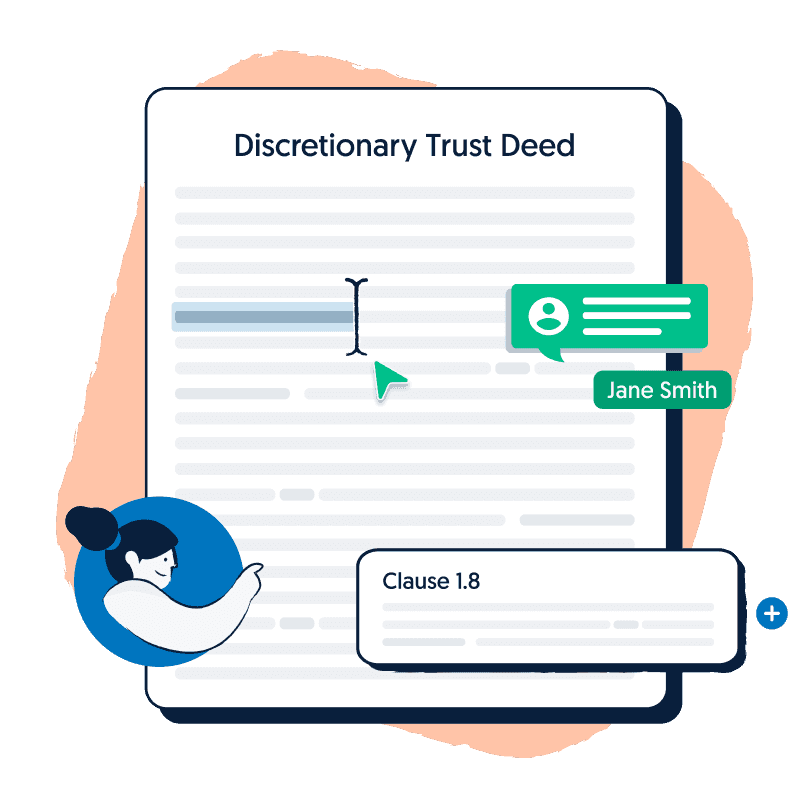Based in Sydney, Raja is a law student enrolled in a Bachelor of Laws and Bachelor of Communications (Writing and Publishing) at the University of Technology Sydney. He is passionate about transferring knowledge in relation to businesses, legal advice and marketing direction. Raja has experience working in immigration law and is driven by the writing, editing and publishing process of content.
What Is Document Collaboration?
Legal document collaboration refers to the coordinated process of drafting, revising, and finalising legal documents in partnership with one or more stakeholders.
This collaboration may take the form of real-time coauthoring using shared platforms such as Microsoft Word or Google Docs, or a more iterative exchange of drafts and feedback, ensuring the document reflects the consensus and legal precision required by all parties involved.
The Digital Age: Benefits of Document Collaboration
Document collaboration tools offer significant advantages for all stakeholders involved in the creation, review, and finalisation of legal documents. In the digital age, real-time editing, version tracking, and secure cloud access have streamlined legal workflows, enhanced accuracy, and improved overall efficiency.
These tools not only reduce turnaround times but also foster transparency and consistency in legal drafting and communication.
Real-time Collaboration with Lawpath
Real-time Collaboration with Lawpath enables you to work seamlessly with your team, clients, and external parties, ensuring faster and more efficient contract completion. Our custom editing tools allow multiple collaborators to edit, suggest, and review content simultaneously, streamlining the drafting process.
With features like version history, tracked changes, and assigned questions, all parties stay aligned and can easily track the progress of the document. Whether you’re drafting contracts, business agreements, or other legal documents, Lawpath’s real-time collaboration tools ensure accuracy, clarity, and timely completion.
Key Features of Document Collaboration Tools
Invite Collaborators
Lawpath’s collaboration model enables users to invite collaborators to work on the same document. Working on physical documents or computer screens with multiple users can be tedious. Inviting multiple collaborators to work on the same document bypasses the complications that arise from having to share screens or physical documents.
Real-Time Co-Editing & Changes
Lawpath’s collaboration model for legal documents enables real-time co-editing, allowing multiple users to work on the same document simultaneously. This streamlined workflow improves efficiency and ensures that all collaborators stay aligned throughout the drafting process.
Differing Permission Levels
Lawpath’s collaboration model for legal documents enables you to allocate collaborators different levels of permissions to work on the same document. These different permission levels include:
Editor: Can make changes, edit content, and delegate tasks. Assign this role if you would like allow full editing access without approving their changes
Suggester: Can review and suggest edits but cannot make direct changes. This role is great for when you want to approve the changes beforehand.
Viewer: Can only comment on the final version without editing. They will not be able to see any AI suggestions or questionnaires.
Tracked Changes
Tracked Changes allow users to mark up and suggest edits directly within a document, creating a transparent and collaborative editing process. Each change is clearly attributed to the person who made it, making it easy to track who suggested what and when.
Collaborators can accept, reject, or comment on each change, enabling discussion and consensus without the need to switch between platforms or lose context in email threads.
This feature not only ensures accountability but also safeguards the original content by keeping a record of all proposed edits. It’s particularly useful for legal teams and stakeholders who need to carefully review and refine language while maintaining version control and clarity throughout the drafting process.
Assign Questions
Assign Questions lets you delegate specific parts of a questionnaire to other collaborators, making it easier to gather the right information from the right people. Rather than following up through email or chasing responses manually, you can assign questions directly within the document.
Each person can fill out the sections relevant to them, which helps keep things accurate and efficient. It is a simple way to involve multiple stakeholders, like clients, HR or finance, without slowing down the process.
Version History
Version Histories allow collaborators to track and view all previous changes made to a document.
This feature ensures transparency by providing a complete record of edits, making it easy to see who made changes, when they were made, and what exactly was altered. It helps maintain control over the document’s evolution and ensures that nothing is lost or overlooked.
Version histories are particularly useful for legal teams, allowing them to review drafts, revert to previous versions if necessary, and ensure all changes are properly documented.
Examples of Where Collaboration Can be Used in Documents
Contract Drafting and Review
Multiple parties (e.g. clients, legal counsel, internal stakeholders) can collaboratively draft, review, and revise contracts such as NDAs, service agreements, and employment contracts to ensure all terms are clear, fair, and legally compliant.
Business Partnership Agreements
Founders, partners, and legal teams can co-author and fine-tune partnership agreements, aligning on profit-sharing, roles, responsibilities, and exit clauses.
Policy & Compliance Documents
HR teams, legal advisors, and compliance officers can work together to develop internal policies such as employee handbooks, privacy policies, or workplace safety guidelines.
Mergers & Acquisitions Documents
Collaboration is key during due diligence and the creation of complex documents like term sheets, share purchase agreements, and disclosure letters, ensuring accuracy and alignment between all involved parties.
Lease or Property Agreements
Real estate agents, landlords, tenants, and lawyers can collaborate on drafting lease agreements, making sure clauses protect all interests and comply with local laws.
Client Onboarding Documents
Legal teams and account managers can jointly prepare tailored engagement letters, scopes of work, and client agreements during onboarding.
Regulatory Submissions
Cross-functional teams can contribute to documents required for government or industry regulators, including licensing, compliance certifications, and audit reports.
Don't know where to start?
Contact us on 1800 529 728 to learn more about customising legal documents, obtaining a fixed-fee quote from our network of 600+ expert lawyers or to get answers to your legal questions.
Conclusion
Legal document collaboration streamlines drafting, improves accuracy, and enhances transparency. With real-time editing, role based permissions, and secure access, teams can efficiently coauthor, review, and finalise documents, ensuring legal compliance and alignment among all stakeholders.








